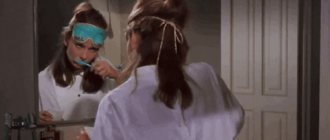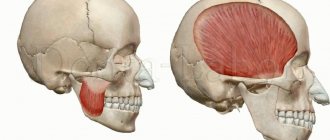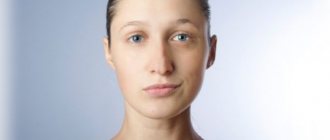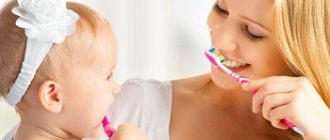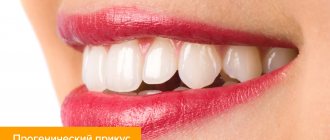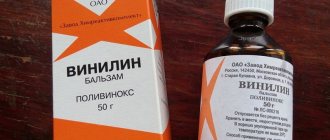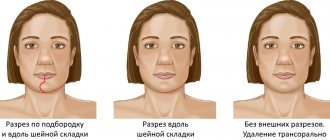External changes in the lower third of the face
Asymmetry - how to correct the situation?
Most radical and “global” rejuvenation treatments affect the lower third of the face. Why? The answer is quite simple: it is in the lower third of the face that the dentofacial system is concentrated, which, for a number of reasons, undergoes significant changes, leading to changes in the surrounding facial tissues. The process, if described in simple words, looks like this: the bone atrophies, the tissue follows the bone. Visually, this violates the aesthetics of the face, causing facial asymmetry.
The presence of bite pathologies can also affect facial aesthetics
.
Let's look at it in order:
First, as it happens, one tooth is lost
.
Missing one tooth. Starting factor #1
If only one tooth is missing, then at first it may not be very noticeable; the contour of the lips will change slightly, as the lip will begin to “sink” into the place of the missing tooth.
But there is one important point: the bone tissue in the absence of a tooth will begin to dissolve.
What does this mean from the point of view of violation of facial aesthetics:
- The necks of neighboring teeth will gradually begin to become exposed and their loss may occur,
- in this case, the lip will sink even more, affecting the neighboring muscles, and small vertical folds may appear above the lip.
The loss of one tooth is not critical, but you need to know that as a result of the loss of a tooth in the chewing region, the load will begin to be redistributed to other teeth, including the anterior frontal region. And the additional, unplanned by Nature, load on the teeth leads to their abrasion
. When two or more teeth are lost, the processes of distributing the load on adjacent teeth begin to occur more actively.
So, the next factor is tooth wear.
Tooth wear and bruxism. System factor #2
Now let's look at what happens with tooth wear and bruxism.
At its core, tooth wear involves abrasion of the tooth tissue. With pathological abrasion and bruxism, this process occurs many times faster, the crown part of the tooth decreases, and again the height of the lower third of the face decreases.
When teeth wear down, changes occur in the temporomandibular joint, just as in the absence of teeth.
What aesthetic defects
faces appear when erased:
- the lower jaw gradually begins to rise upward,
- the distance between the tip of the nose and the chin decreases,
- nasolabial folds increase,
- Vertical wrinkles appear around the lips.
The next factor in external aesthetic changes in the face is malocclusion
. This is one of the most common problems.
Malocclusion. Global factor #3
If the teeth are not positioned visually, it may:
- the tip of the chin moves,
- a second fold appears under the chin,
- “cluttered” chewing teeth can externally “round” the jaw line at their location, that is, the jaw line from the chin towards the ear will not be “chiseled”.
- also, if the teeth are incorrectly positioned, the lower jaw can protrude forward or, on the contrary, move backward - outwardly such a chin looks “sloping”, as if the neck immediately begins from the chin.
Bite pathology very often “adds” a sufficient number of unplanned wrinkles
.
From an aesthetics point of view, a problem arises that very often begins to be solved with the help of cosmetic procedures: Let’s look at what it looks like using specific examples of only two malocclusion pathologies (and there are many more of them).
Did you know that, for example, the feature of the distal occlusion
is there an imbalance in jaw development?
The teeth of the upper jaw quickly begin to protrude above the lower ones, while the lower jaw lags behind in development, as a result of which the chin appears small and looks unnatural. From an aesthetic point of view, this leads to the appearance of wrinkles
in the lip area. And the face itself becomes unattractive.
And in case of deep bite
there is a significant overlap of the lower dentition with the upper teeth and, as a consequence of such contact, there is increased wear of the teeth, which we talked about earlier in factor #2, which further leads to a reduction in the lower third of the face.
We started the story with factor #1 - the loss of one tooth. But the most serious problems of facial aesthetics begin with the loss of several teeth, when bone tissue atrophy begins to develop, entailing, in fact, both bone atrophy and changes in the structure of soft tissues.
So - edentia. Global factor #4
Adentia can be either complete or partial. With complete edentia, there is a complete absence of teeth on one or both jaws. Partial edentia implies the absence of one or two teeth or a segment of teeth, for example chewing teeth. Loss of teeth, especially complete loss, immediately affects the appearance of the face.
If teeth are missing, the height of the lower third of the face decreases, what does this lead to? This leads to a loss of support for the jaws by the teeth, as a result of which the jaw moves backward in the joint area, and forward and upward in the chin area. This is how an “old man’s face” appears - the distance between the tip of the nose and the top of the chin decreases.
How does edentia appear on the face?
What aesthetic defects appear on the face during the development of edentia:
- all folds naturally begin to deepen, nasolabial folds become pronounced - they descend to the corners of the lips,
- the lips outwardly look much thinner, since when they lose support from the teeth, they shift towards the oral cavity,
- the tone of facial muscles decreases, the cheeks and chin tissues sag,
- in the absence of a group of chewing teeth, the soft tissues begin to “fall” inward.
- and with a long-term absence of chewing teeth, bone tissue begins to dissolve, outwardly it looks like very “sunken cheeks.”
As you can see, all these factors influence changes in the appearance of the face, its shape and gives asymmetry. Changes can occur regardless of age, but at the same time they make the face look older due to the deepening of the nasolabial folds and incorrect position of the jaws.
Complex maxillofacial implantation and dental prosthetics during microsurgical operations
Before
After
Specialists:
Nazaryan David Nazaretovich Kyalov Grigory Georgievich Fedosov Alexander Viktorovich Batyrev Alexey Vladimirovich
Description:
Patient B., 51 years old, diagnosed with postoperative defect of the lower jaw. Condition after combined treatment of cancer of the mucous membrane of the alveolar process of the lower jaw. History of the disease: the patient underwent surgical treatment at the place of residence to the extent of: subtotal resection of the lower jaw with reconstruction with a titanium bar. Then, after 1 year, the reconstructive force plate was removed due to its exposure. Sent to the Department of Maxillofacial and Plastic Surgery of the National Clinical Clinical Center of the Federal Medical and Biological Agency of Russia.
03.10.2018 — microsurgical reconstruction of the lower jaw was performed using a revascularized fibular musculocutaneous autograft with the installation of dental implants on the upper and lower jaws, and immediate loading with a temporary prosthesis supported by dental implants.
What does cosmetology offer for facial rejuvenation?
Now that you have understood the basics of dental pathologies that affect the appearance of the lower third of the face, let's look at the main range of cosmetic procedures that are aimed at maintaining facial tissue and skin in tone and which have an externally rejuvenating effect.
Let us immediately make a reservation that most of these procedures do not have a permanent effect, and in order to always look young (not only in the soul, but also in appearance), these rejuvenation procedures must be repeated regularly.
So, modern rejuvenation methods guard your beauty
Face lift
Let's look at several options for procedures for correcting the lower third of the face and eliminating asymmetry.
Lipolitics
The procedure for modeling the face using lipolytics is called injection lipolysis. Lipolitics are preparations based on natural ingredients, their main action is aimed at the breakdown of subcutaneous fat cells, resulting in a rejuvenating effect.
The effect of the procedure with lipolytics occurs quite quickly, the oval of the face changes, and the subcutaneous tissue structure is aligned. The procedure does not allow the splitting of an extensive layer of fat.
In what cases are lipolytics used?
- if you need to eliminate a double chin,
- form a natural oval face,
- reduce the volume of the cheeks,
- eliminate defects in the shape of the nose,
- correct nasolabial folds
Cost per 1 ml
procedures vary
from 3 thousand rubles
and more, depending on the drug, the number of milliliters administered and the number of correction zones. For a pronounced effect, you need at least six to eight procedures for each zone, which involves serious expenses, reaching 200 thousand rubles and even higher.
The lifting effect is temporary. After some time, the procedure is usually repeated.
Mesotherapy
Mesotherapy consists of therapeutic injections of individually selected cocktails, which are injected into the middle layer of the skin with a very thin needle.
After the mesotherapy procedure:
- complexion improves,
- muscle tone increases,
- you can eliminate “creases” in the skin,
- you can remove nasolabial folds and drooping corners of the lips,
- You can remove your double chin.
The number of rejuvenating procedures during mesotherapy depends on the age and problems that need to be eliminated. Mesotherapy has a cumulative effect, the results of the procedures can be seen in 2-4 weeks. On average, 5 to 7 procedures are required with an interval of 1 time per week; if necessary, the cosmetologist can increase the number of mesotherapy procedures. The cost of the procedure varies from 4000 - 5000 rubles
and higher in one procedure.
Mesotherapy effect
- temporary. To maintain the effect, the procedure must be repeated once every 6-12 months.
Biorevitalization - 3D face lifting with hyaluronic acid
The biorevitalization procedure is currently the most popular. We all know well, according to doctors, that the main property of hyaluronic acid is to retain moisture, maintaining the natural hydrobalance of the skin.
Biorevitalization is carried out in all areas where there are problems - on the face, neck, décolleté, and is also used in other areas of the body, providing the necessary hydro reserve to the skin layers. Injection biorevitalization is comparable in effect to a surgical facelift; the procedure can completely sculpt the face.
Using hyaluronic acid injections, you can correct the lower third of the face:
- remove pronounced nasolabial folds,
- remove flaws, if any, on the chin, that is, change its shape,
- and also adjust the profile along the lower jaw.
Cost of biorevitalization.
The cost of injections depends on the drug used, its density and the number of milliliters required for the procedure. For example, for visual correction of malocclusion (the area under the chin), you may need up to 4 ml of the drug, the cost of 1 ml is from 18-20 thousand rubles. The general course can range from 1 to 5 procedures at intervals.
The effect of biorevitalization
- temporary. After the procedure, there is an immediate, pronounced visual effect that lasts from 5 to 12-15 months; to maintain the effect, the procedure must be repeated.
Kogi threads
Cog mesothreads provide a clear oval face and a pronounced lifting effect. Installed mesothreads contribute to the formation of dense connective tissue, and also help to activate the production of collagen and elastin, which are responsible for skin elasticity.
Kogi threads have notches, thanks to which it is possible to achieve:
- pronounced lifting effect,
- clear contour, tightening of soft tissues and prolonged action of thread lifting,
- They perfectly hold the given shape of problem areas of the face or body.
You may need 4-6 threads for the whole face, the average price is from 5 - 15 thousand rubles for 1 thread.
Effect of the procedure
- longer lasting, but also temporary. Kogi threads have a prolonged effect, the result of the procedure lasts from 2 to 4 years, to maintain the effect the procedure must be repeated.
Eye prosthetics
Such implants are used in cases of loss of the eyeball due to various diseases or injuries. If the patient has eyelids, doctors make a prosthesis that is similar in color and size to the neighboring eye, and then place it in the eye socket. If the eyelids are damaged, the patient first has 2-3 implants installed in the periorbital bones to securely fix the artificial eye. Magnets are attached to these implants and are securely attached to magnets in the prosthetic eye. Thus, if necessary, the patient can independently remove the eye implant to clean it and the eye socket, and then insert it into place.
